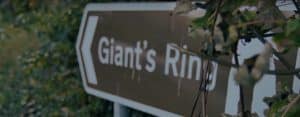Irish Weaving Classes Near Me: Your Guide to Local Textile Artistry
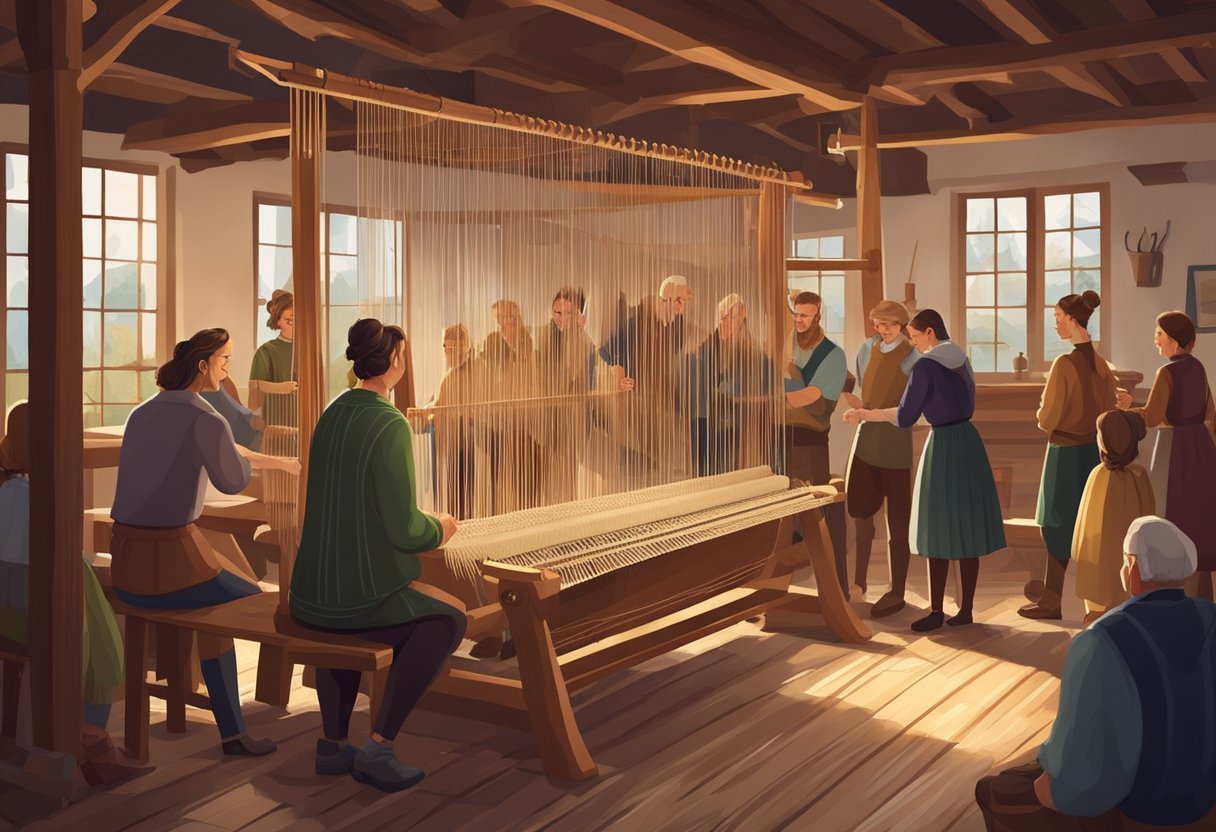
Updated On: April 22, 2024 by Ciaran Connolly
Irish weaving is an art form steeped in history and tradition. From the intricate patterns that tell tales of mystical Irish landscapes to the very fibres that are intertwined to create these beautiful pieces, weaving is an integral part of Ireland’s cultural heritage. For enthusiasts and beginners alike, the journey into the world of Irish weaving classes can be a rewarding pursuit. These classes offer a chance to not only learn a new skill but also to immerse oneself in a piece of living history.
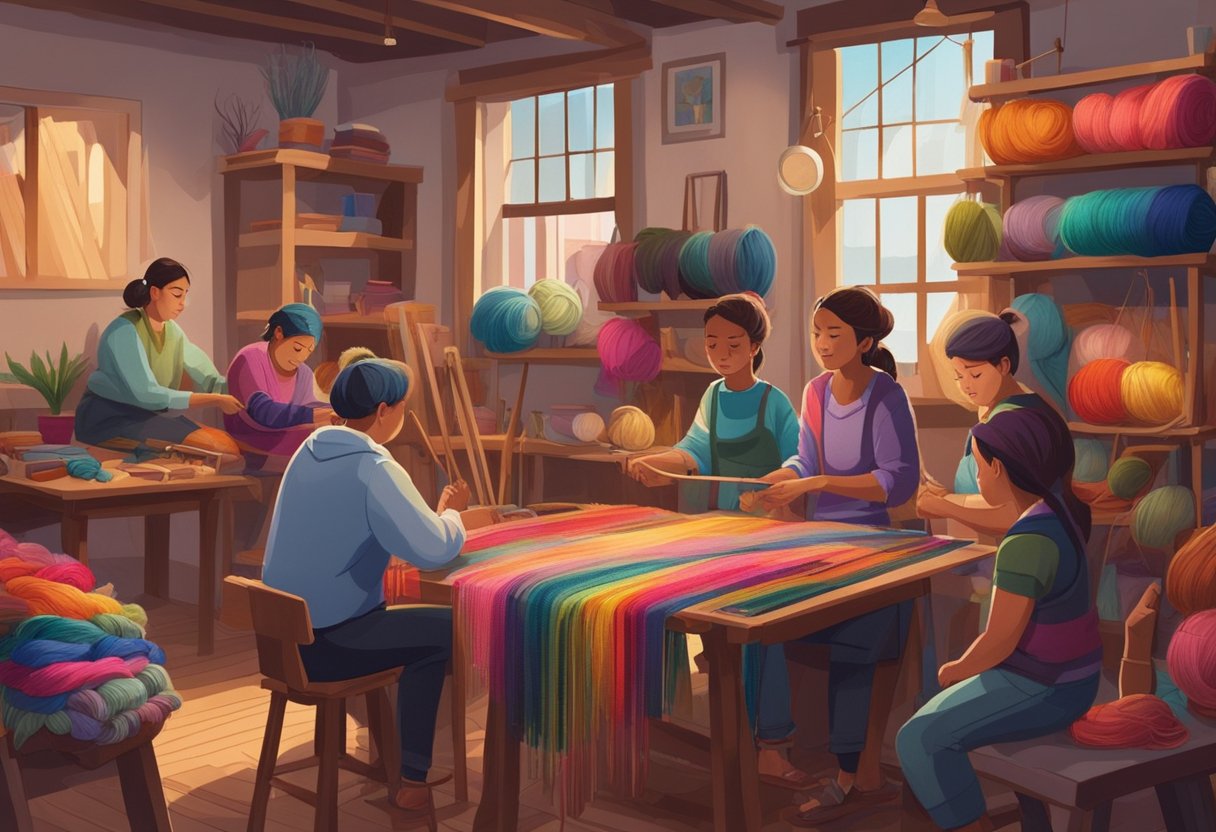
Finding a weaving class in Ireland that meets your needs, whether as a beginner or an advanced weaver, can be a straightforward process. Many Irish weaving studios and guilds provide a range of courses, from introductory sessions on the basics of weaving and understanding the different types of looms, to more advanced discussions on weaving techniques and materials. Workshops are typically available in various formats, such as online courses, live classes, and in-person sessions, ensuring accessibility for those keen to weave their own Irish tale.
Key Takeaways
- Irish weaving classes provide an immersive experience in Ireland’s rich cultural heritage.
- Classes cater to various skill levels, from beginners to advanced weavers.
- Workshops are accessible in various formats including online and in-person sessions.
Overview of Irish Weaving
Irish weaving is an integral part of our cultural heritage, famed for its rich history and the traditional techniques passed down through generations that merge craft and artistry.
History of Weaving in Ireland
Weaving in Ireland boasts a tradition that spans centuries, with roots tracing back to the early monastic settlements. We have cherished and maintained these ancient skills, viewing them as a link to our past. The Guild of Master Irish Weavers, for instance, was established in the 15th century, underscoring the importance of weaving in our nation’s history. It has been responsible for maintaining the high standards of the craft in Ireland, ensuring that Irish textiles remain synonymous with quality.
Understanding the Art Form
The art form of Irish weaving encompasses various styles, including the renowned tapestry weaving, which is as much a creative expression as it is a craft. Our weavers take immense pride in producing textiles with intricate patterns and a tactile quality that is instantly recognisable. We incorporate traditional techniques to create both practical and decorative items, ensuring our woven fabrics are prized both at home and internationally. Understanding Irish weaving requires an appreciation for the meticulous handiwork and passion that imbues every thread.
Finding Weaving Classes
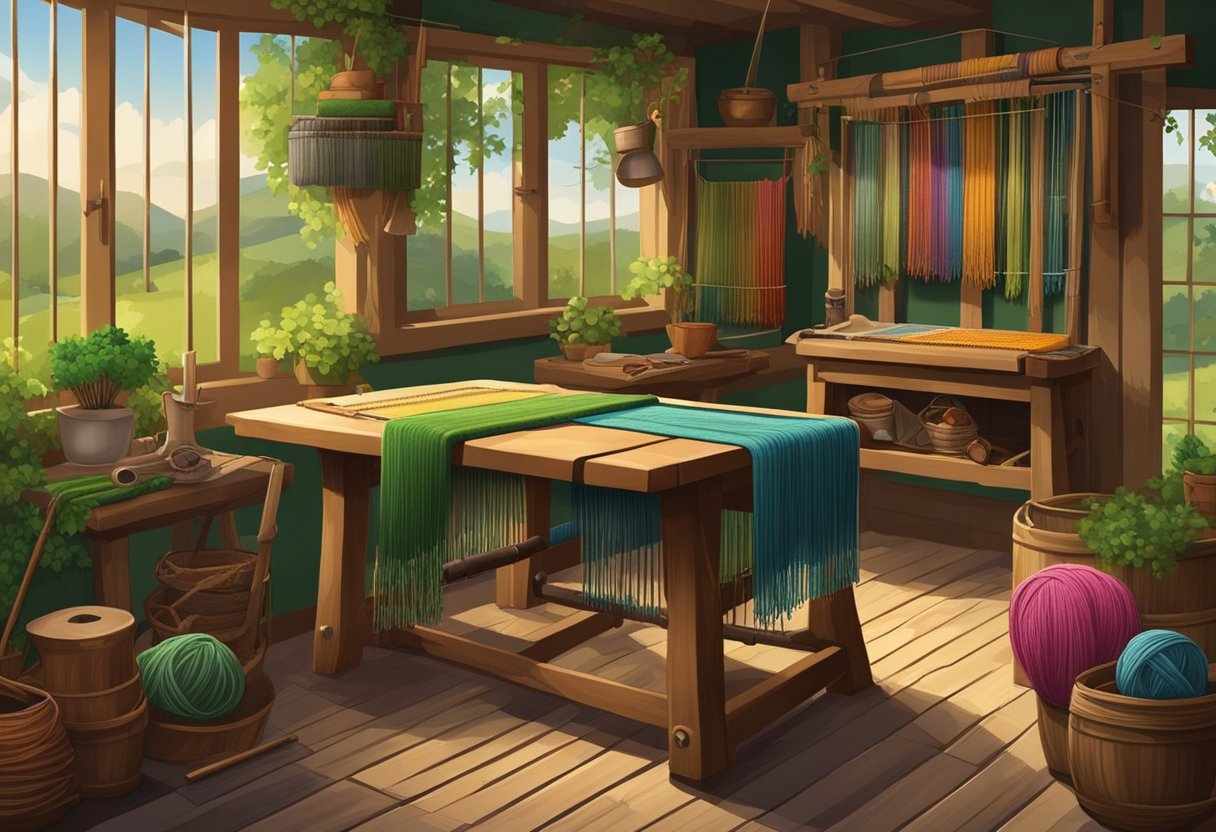
When searching for weaving classes in Ireland, various options are available, catering to different skill levels and preferences. We’ve sorted them into neat categories to assist you in finding the perfect course.
Weaving Workshops
We offer hands-on workshops that are ideal for both beginners and more experienced weavers. Each workshop provides a collaborative environment where you can learn from expert weavers. Groups are kept small to ensure personalised attention, and all necessary materials are usually provided.
Live Online Classes
For those who prefer the convenience of learning from home, we host live online classes. These sessions are interactive, allowing for real-time feedback and support from our instructors. They suit individuals who require the flexibility of choosing when to engage with the course material.
One to One Tuition
If a more tailored experience is what you’re after, we provide one to one tuition opportunities. These personalised sessions offer focused guidance and are customised to your pace and weaving goals. One to one tuition is perfect for addressing specific challenges or advancing your skills rapidly.
Weaving Techniques and Materials
In this section, we’ll explore the foundational weaving techniques suited for beginners, the variety of materials and yarns used in weaving, and some of the specialised weaving styles that have been cultivated over the years.
Introductory Weaving Techniques
When we start out in weaving, the first technique we often learn is plain weave. It’s the simplest form of weaving, where the weft thread crosses over and under each warp thread alternatively. As our skills progress, we move on to twill, which is characterised by a diagonal rib pattern, and then to satin weave, known for its smooth surface allowing intricate designs to be created. These basic interlacements form the backbone of countless fabric structures and patterns.
Materials and Yarns
The materials we choose greatly impact the texture, drape, and use of our woven fabric. Common materials include wool, known for its warmth and full-bodied texture, and cotton, favoured for its softness and versatility. Weavers can also utilise silk, adding a natural sheen and elegance to their work. In addition to these traditional yarns, contemporary weavers may incorporate synthetic fibres, which can offer increased durability and unique visual effects.
Specialised Weaving Styles
Beyond the basic techniques, we explore specialised weaving styles that have been perfected over centuries. One distinguished style is Jacquard weaving, which utilises a special loom capable of creating complex and detailed imagery in the fabric. Tapestry weaving, too, allows we to produce intricate, pictorial works with a rich depth of colour and texture. Each of these styles requires a thorough understanding of both the loom’s mechanics and the properties of the chosen yarns.
Types of Looms
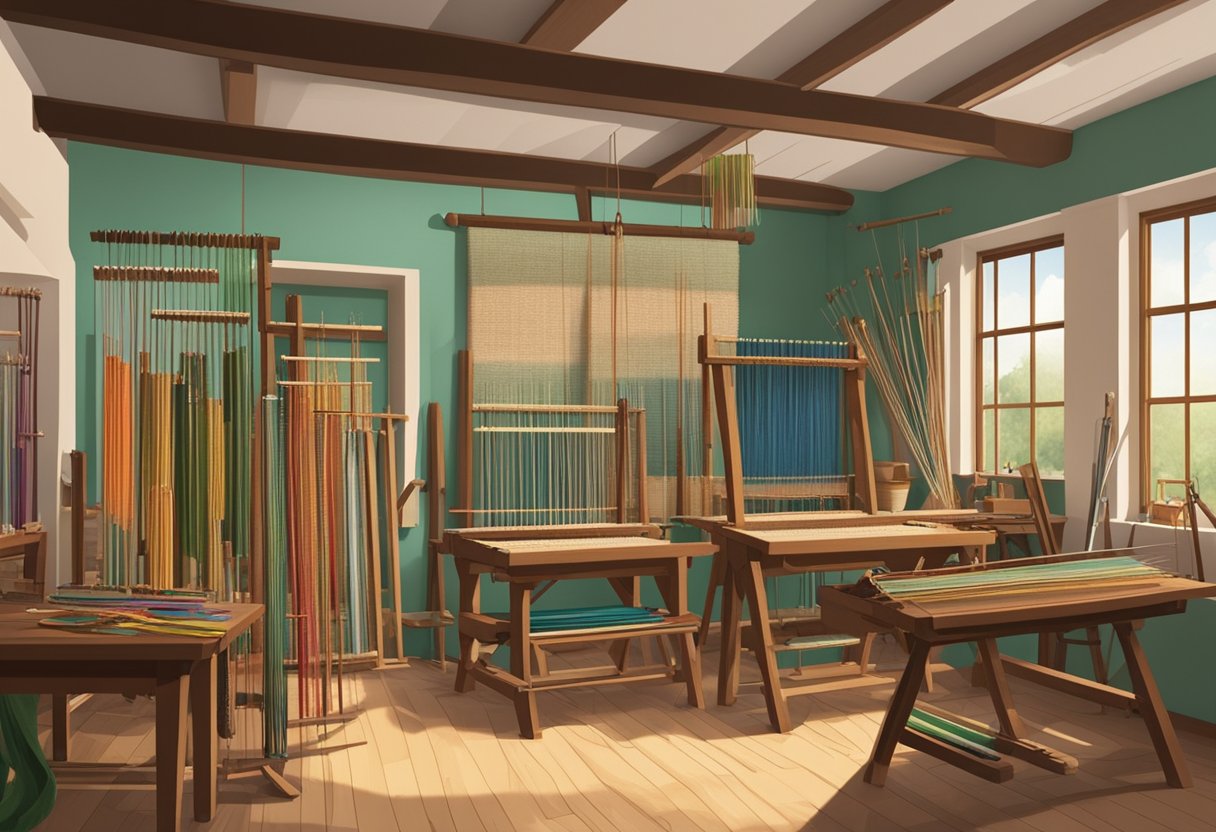
In our exploration of Irish weaving, we recognise the importance of the tools that make this art form possible. Below, we detail the nuances of different types of looms used in Irish weaving, each contributing uniquely to the craft.
Frame Looms
Frame Looms, often the starting point for new weavers, represent a simple, yet versatile piece of equipment. Items such as a 4-sided frame are necessary for those beginning their journey into weaving. Occupying little space, these looms can be set up in various sizes, sometimes even utilising an old picture frame. Their portability allows weavers to work almost anywhere, effortlessly weaving smaller pieces with adaptability and ease.
Traditional Looms
Moving beyond the basics, traditional looms, like the floor loom, offer more complexity and capability. These require a dedicated space as they are larger and feature a robust framework capable of producing wider and more intricate weaves. In Irish weaving, traditional looms allow for the production of larger textiles such as blankets and garments. The mastery of such equipment calls upon a more advanced understanding of weaving techniques and provides the ability to work with a greater variety of patterns and materials.
Spinning and Fibre Arts
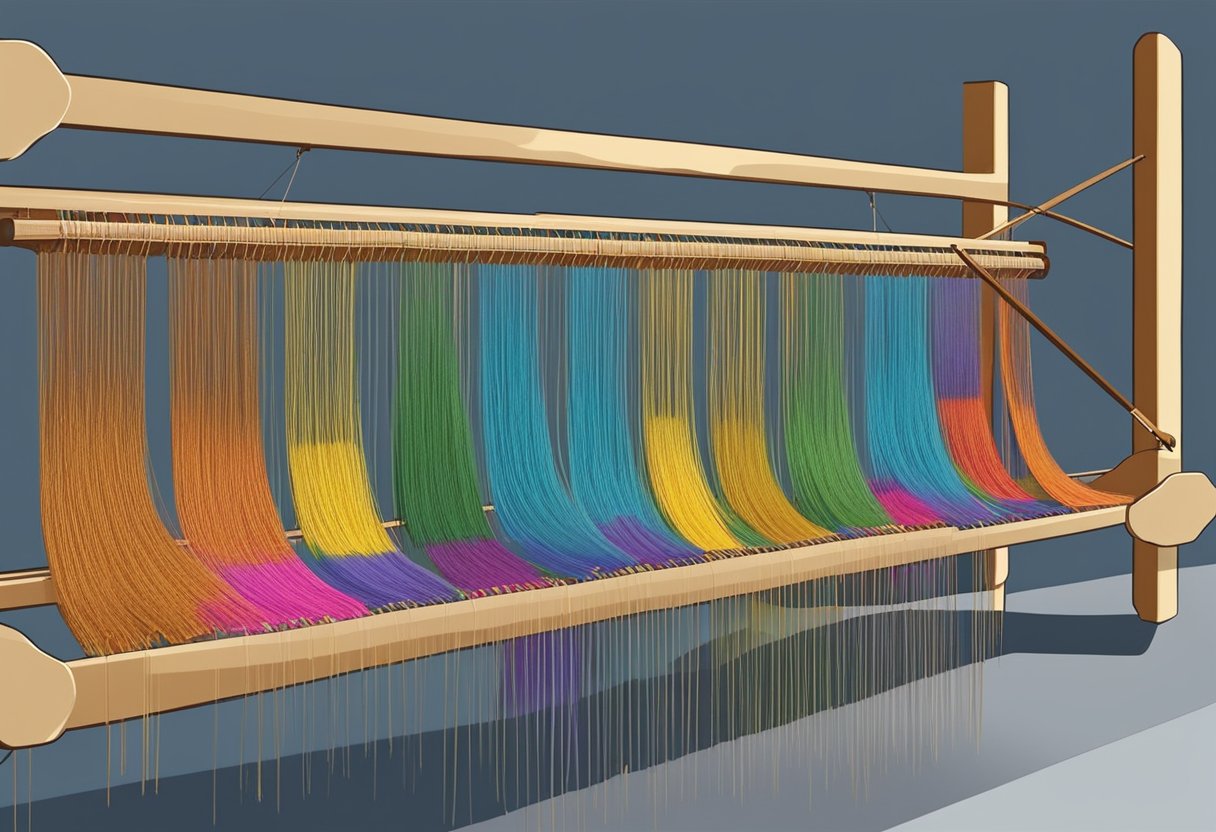
In this section, we uncover the artistry and skill involved in Irish spinning and fibre crafts, with a special focus on hand spinning workshops and the diverse techniques of felting and crochet.
Hand Spinning Workshops
Hand spinning is a craft that has withstood the test of time, allowing one to transform wool into yarn using traditional methods. In Ireland, there are workshops available that cater to both beginners and seasoned spinners looking to refine their technique. These workshops often cover the basics, such as understanding fibres and operating the spinning wheel, to more advanced topics like plying and finishing the yarn.
Felting and Crochet Techniques
Felting is a process that turns wool into a non-woven cloth by matting, condensing, and pressing fibres together, and it can be either wet or needle-felted. Irish fibre artists also employ crochet techniques, which utilise a crochet hook to interlock loops of yarn, thread, or strands of other materials. Our local experts not only teach the fundamentals, but they also inspire creativity, guiding participants through the production of exquisite felted and crochet pieces, from functional objects to intricate artworks.
Weaving for Beginners
Embarking on the journey of weaving can be immensely rewarding for beginners, as it offers a hands-on way to connect with traditional Irish crafts. We’ll guide you through the essential first steps and the key equipment you need to begin your weaving adventure.
Starting Out
Weaving is a craft that involves interlacing two sets of yarn or thread to create textiles. As beginners, we often start with simpler techniques, such as using a drop spindle for spinning yarn or basic loom weaving. We highly recommend attending introductory classes or workshops, as hands-on guidance can be crucial. Classes also provide an overview of weaving history and basic patterns, and you might find sessions tailored for beginners, such as those offered by the Irish Guild of Weavers, Spinners and Dyers. Tuition varies, but it typically includes sessions spread over select dates, allowing us to practice and refine our skills over time.
Choosing the Right Equipment
When selecting equipment, it’s essential to choose tools that align with our skill level and the projects we aim to tackle. For most beginners, a simple frame loom or rigid heddle loom is ideal. Here’s a basic rundown of what we might need:
- Loom: A beginner’s loom should be user-friendly and adaptable.
- Yarn: Various types and weights, suitable for practice.
- Shuttle: To carry the weft thread through the shed.
- Warping Board: For measuring the warp threads.
Investing in good quality equipment from the start can enhance our weaving experience, making the learning process smoother and more enjoyable. Local workshops often allow beginners to use their equipment during classes, which you can discover through resources like Wear and Woven.
Advanced Weaving Classes
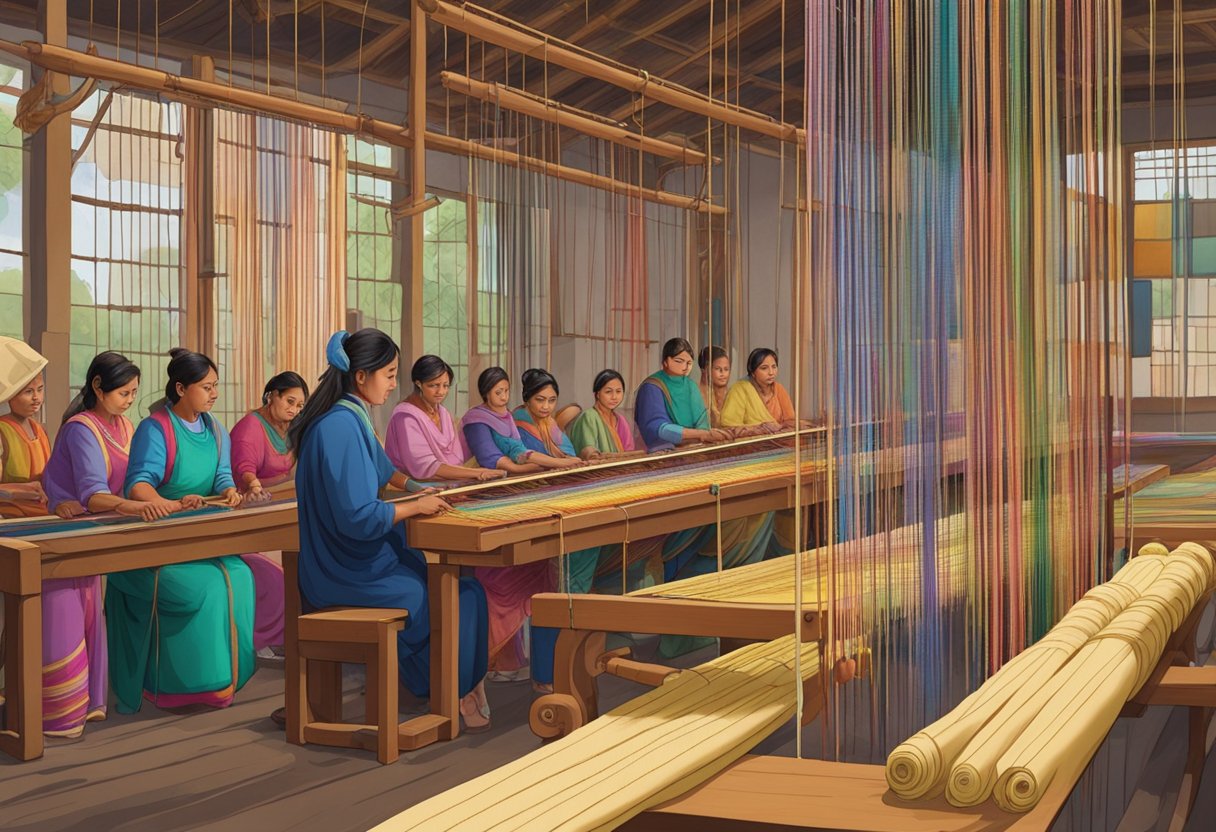
In our advanced weaving classes, we delve into intricate designs and unconventional materials, perfect for those looking to expand their weaving horizons.
Mastering Complex Patterns
We focus on the art of tapestry, teaching you to craft detailed tapestries with a variety of complex patterns. You will learn to interpret and execute sophisticated designs, transitioning seamlessly between different weave structures. Our instructors guide you through the process, ensuring you understand the nuances of creating multi-hued and textured tapestries that tell a story.
Weaving With Unusual Materials
Expanding beyond traditional fibres, we explore weaving with unconventional materials such as willow. Our classes encourage creativity, allowing you to experiment with willow and other materials to produce unique, three-dimensional works. This hands-on experience not only broadens your skill set but also introduces you to the diverse possibilities within the realm of weaving.
Irish Weaving Studios and Guilds
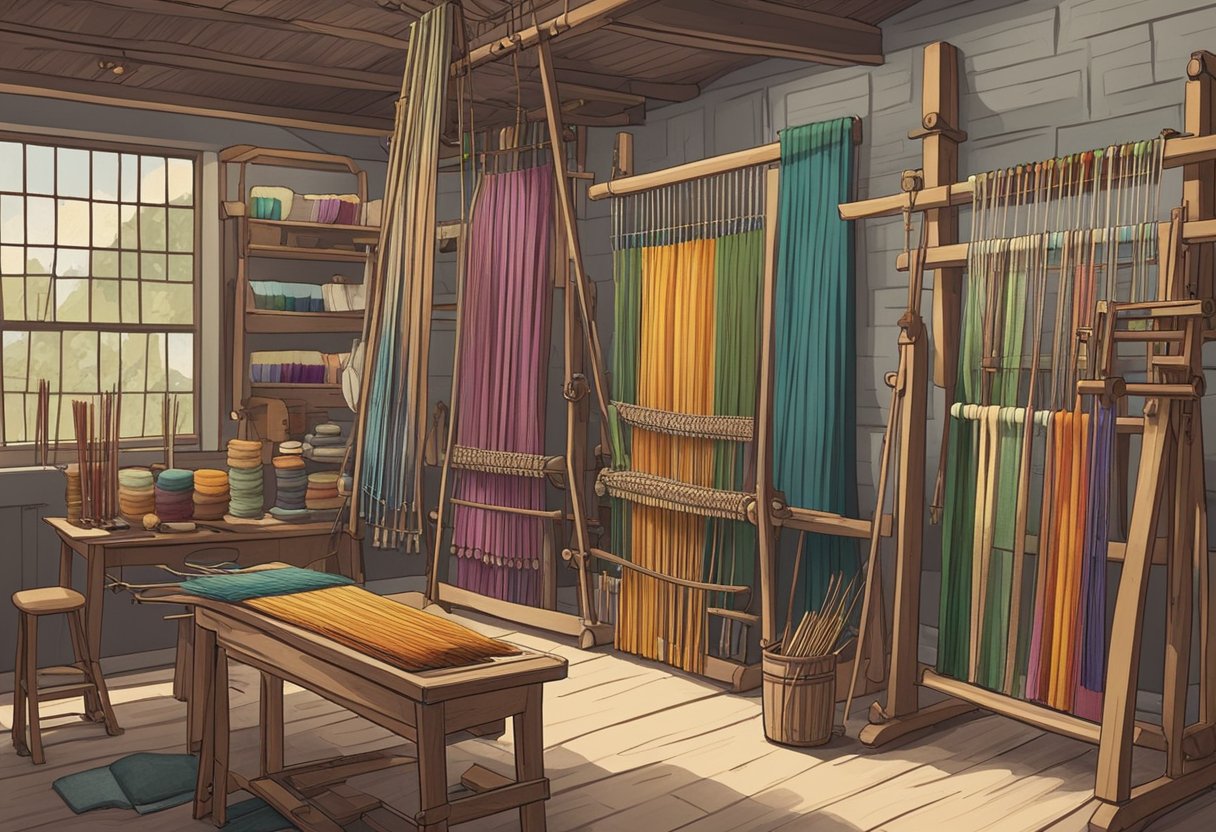
Ireland boasts a rich tapestry of weaving studios and guilds where aficionados and newcomers to the craft alike can immerse themselves in the tradition of Irish textile arts. Here, we explore the hubs of weaving in Dublin and Galway as well as the broader network of regional guilds that nurture this craft across the country.
Studios in Dublin and Galway
In Dublin, the enduring allure of weaving is evident within the vibrant community projects that celebrate a millennium of textile heritage. The community group mentioned in The Irish Times organises weaving classes and workshops that not only teach technique but also connect participants with the historical threads of the city’s weaving past. Demonstrations and exhibitions further enrich the cultural fabric of the region.
Galway, on the other side of the country, is no stranger to the weaving loom. Studios there marry the wild beauty of the Connemara landscape with the intricate artistry of the loom. Workshops often highlight local fibres and dyes, grounding learners in the environmental context of their creations.
Regional Guild Networks
The Irish Guild of Weavers, Spinners and Dyers, a treasure within Ireland’s craft culture, extends its reach beyond any single location. This guild is not only a member of the Crafts Council of Ireland but is also part of a larger network ensuring the tradition thrives across Irish regions. Across this network, guild members can find not just camaraderie but also education and preservation of weaving, spinning, and dyeing techniques indigenous to Ireland.
From the bustling activities in urban centres to the workshops dotted across the Irish countryside, these networks facilitate interconnectedness amongst crafters. They provide a platform for demonstrations, skill-sharing, and promote the sustainability of this timeless art form across communities and counties.
Purchasing Weaving Supplies
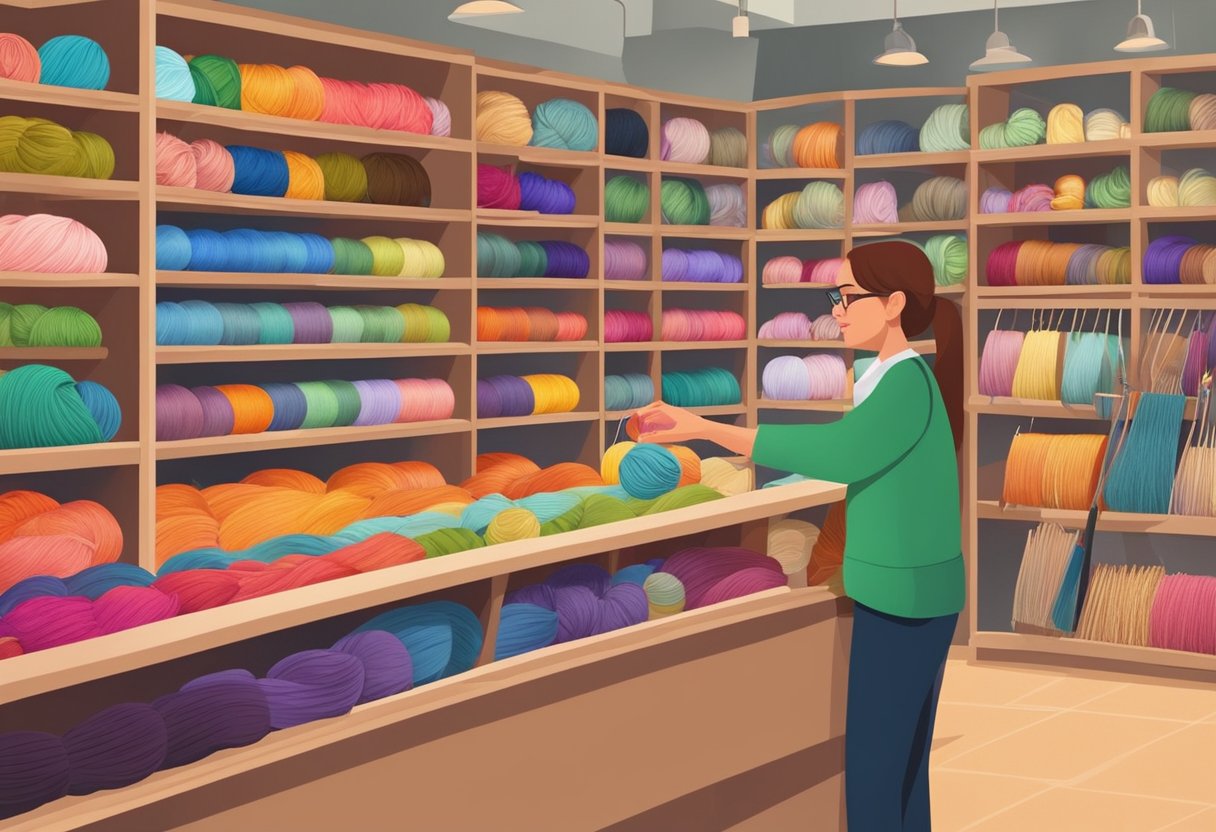
When it comes to weaving, having the right materials and equipment is crucial for creating beautiful and authentic Irish textiles. We’ll guide you through finding local suppliers and online stores to ensure you have everything you need for your weaving projects.
Finding Suppliers in Ireland
For those looking to immerse themselves in the rich tradition of Irish weaving, locating suppliers who specialise in Irish wool and materials can enhance the authenticity of your work. We recommend reaching out to the Irish Guild of Weavers, Spinners and Dyers which provides contact information for a variety of courses, and potentially leads to local suppliers of quality wool and other materials. Furthermore, enthusiasts can learn from experienced weavers who often know the best places to source the finest Irish wool throughout Ireland.
Online Weaving Shops
As for online options, shops like Weavers Loft offer a comprehensive selection of weaving supplies, from yarns to looms. They have established themselves as a go-to source for everything you might need. Another excellent online destination is Susan’s Fiber Shop where you’re likely to find a wide range of equipment and materials for spinning, weaving, and other fibre arts. These shops often stock a variety of materials including sought-after Irish wool, providing convenience and quality for weavers around the world.
Cultural and Social Events

We understand the significance of connecting with our roots through cultural and social activities. Particularly in Ireland, where the art of weaving holds a special place in our heritage, these events provide a fantastic opportunity for individuals to engage with tradition, learn new skills, and form networks.
Weaving Demonstrations
Demonstrations serve a crucial role in cultural and social events, as they offer firsthand insight into the intricate process of weaving, from creating bread baskets to intricate tapestries. These live displays are not just educational; they’re also a space where friends and visitors can gather, fostering a sense of community and shared interest.
Local Weaving Networks
Guilds and weaving networks are invaluable for enthusiasts wanting to delve into the craft. These organisations often host workshops and events, including Christmas crafting sessions, where one can learn to make anything from decorative items to practical basket making. They’re perfect for making new friends and becoming part of a supportive community that values this timeless art form.
Frequently Asked Questions
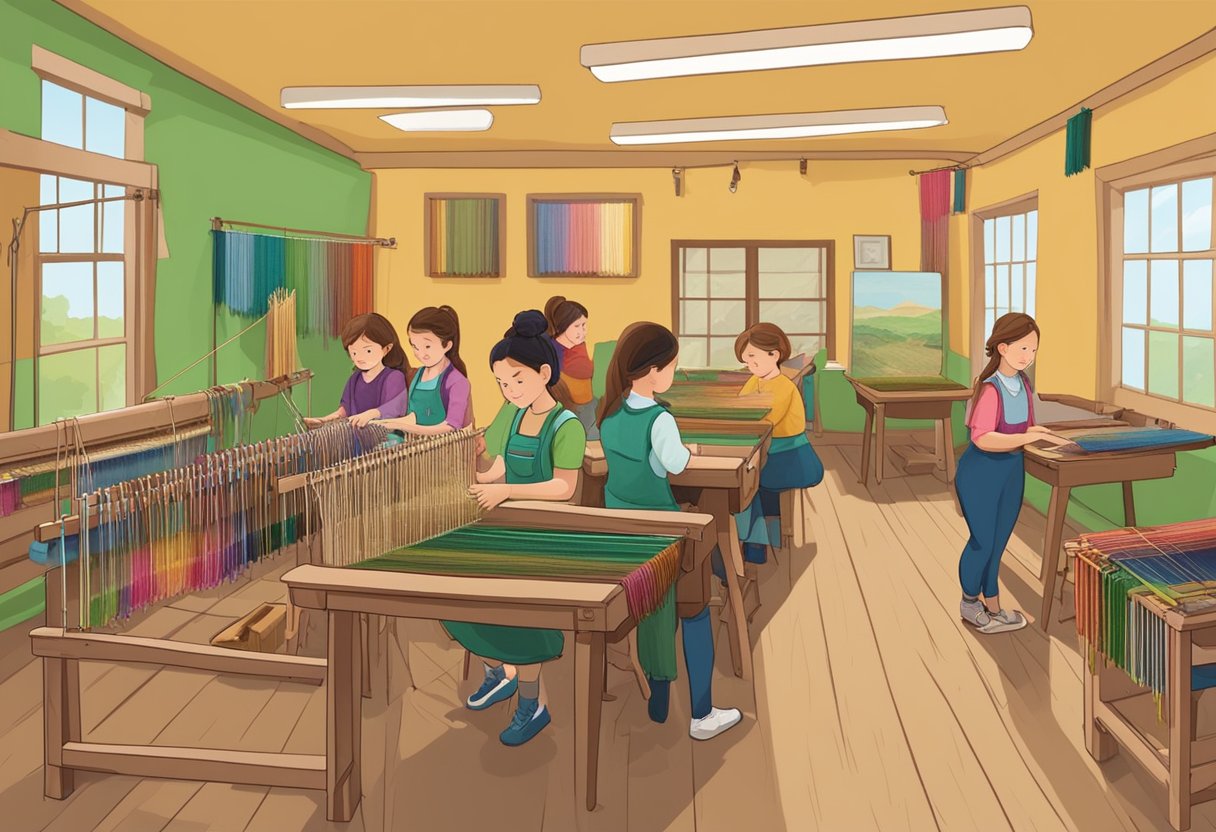
In our FAQs, we address some common queries about Irish weaving classes to guide you in finding appropriate courses and workshops in your locality.
What are some beginner-friendly Irish weaving courses available locally?
If you’re starting out, the Irish Guild of Weavers, Spinners and Dyers offers courses tailored for beginners. They travel to various venues around Ireland, offering a great starting point for local learners.
Where can adults enrol in introductory courses for Irish weaving?
Adults looking to learn weaving can check out Áine Dunne’s courses, where even absolute beginners can sign up for fun workshops that introduce the basics of hand spinning and tapestry weaving.
Are there any complimentary Irish weaving workshops in the vicinity?
While complimentary workshops are rare, it’s helpful to look out for local community centres or arts councils, as they occasionally host introductory sessions. Keep an eye out for events at places like the Jansen Art Center that might offer such opportunities.
Which studios offer top-rated Irish weaving programmes in my area?
Searching for top-rated programmes can lead you to specialised studios, and though specifics may vary by location, platforms like Wear and Woven provide insights on finding quality local weaving workshops.
How can one initiate the learning of Irish weaving techniques from home?
For those who prefer to start learning from home, online resources and video tutorials can provide an introduction to Irish weaving techniques. Begin with essential skills, such as setting up a loom, before progressing to more complex weaves.
What is the difficulty level for a novice to start weaving on a loom?
For novices, starting to weave on a loom presents a moderate challenge. Basic loom operation and understanding the weave structure are crucial steps. However, with practice and patience, beginners can quickly grasp introductory weaving concepts.



